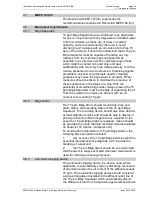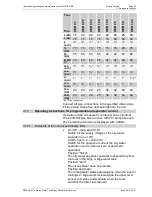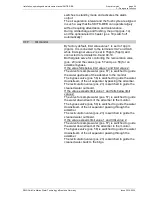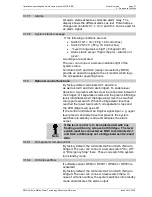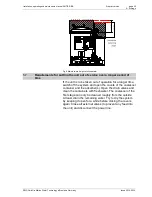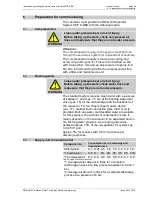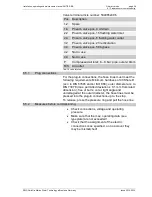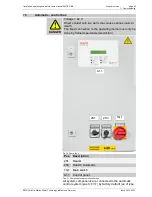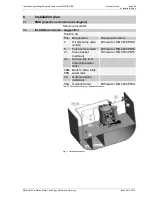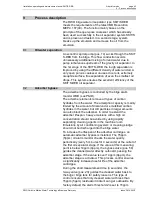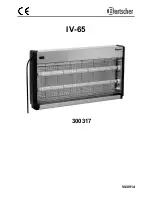
Installation, operating and maintenance manual SKIT/S-DEB
3rd print version
page 30
3 – Design and function
RWO GmbH
●
Marine Water Technology
●
Bremen
●
Germany
Issue 2014-04-10
3.21
Environmental requirements
Voltage
3.21.1
Comply with the connection voltage as stated on the label
at the control cabinet. The internal wiring of the device is
fixed, all external connections have to be made by the
customer acc. to the wiring diagram.
The power consumption depends on size and equipment
of the unit and is specified on the wiring diagram.
Feed water
3.21.2
Feed water has to show the characteristics as defined by
the IMO. Do not use any biocides or chemicals for
cleaning on board which aren’t biodegradable if these
products finally get into the plant.
Connections
3.21.3
Connect all pipe connections in the specified dimensions
(
à
3.14.3 Pipe connections). Fit the piping stress-free and
leak-tight into the unit.
Cleaning facilities
3.21.4
Provide a fresh water connection at the unit and some
space for doing simple investigations of the technical
status of the unit.
Oil detection and oil discharge
3.21.5
Oil detection and oil discharge are mainly automised. The
oil separation interval and the flush cycle are aligned in
such a way that the bilge water oil separator can operate
largely without requiring attendance and maintenance.
Protection
3.21.6
The electric protection is implemented in IP 56.
Humidity
3.21.7
As by IMP requirements, the unit can tolerate the
conditions in the engine room onboard (tropical).
Temperature
3.21.8
The oil separator system is designed for a water mix
temperature between min. + 2°C and max. 45°C.
Note
The oil-separation pump is designed to operate at a
maximum temperature of 45°C. At temperatures
higher than 45°C, excessive starting torque occurs in
the motor due to thermal expansion of the materials
of the rotating parts which means that the motor is in
danger of being damaged beyond repair.




